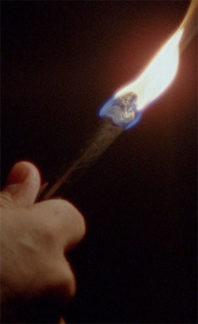
There are some moments in Joshua Bonnetta and J.P. Sniadecki documentary El Mar La Mar that remind me of archaeology. It depicts the Sonoran Desert, which contains an unguarded portion of the US-Mexico border. And during its first twenty minutes, they show what migrants leave behind. In regular archaeology, there’s an emotional distance between objects and those who discover them. That’s the opposite here, where laminated icons of the Virgin Mary have a haunting effect on its audience. The Latinx people who cross this border believed that the Virgin will help them. Their journey is perilous, and all we can give them as audience members is hope.
Experimental documentaries are often inquisitive and provocative. El Mar La Mar has that but with a conscience. It asks its audience to contemplate the meanings behind the still lifes and, eventually, landscapes that they present on screen. Bonnetta and Sniadecki use 16mm just like the rest of the filmmakers who Vertical Features present. And it brings out the the textures of these objects and places, transporting us, making us feel the desert’s aridity. Once in a while, they record a train passing by, its bells like ones we hear in a church, ominous.
El Mar La Mar has mostly static shots of the inanimate. But occasionally they feature the voices or faces of those who see the desert everyday. Most of the Americans that Bonnetta and Sniadecki feature discuss the things they do to help the refugees. Or the mythological weight of the land they grew up in. Sometimes they show a cowboy of ambiguous racial descent. They accompany this visual with country music that we hear in old Hollywood movies, reinforcing this mythology. This movie is mindful of the multiple narratives that are possible within the land, ones that change within generations.
Nonetheless, El Mar La Mar mostly focuses on the now. Bonnetta and Sniadecki record the South Americans who cross the border, telling their stories. “Anything can happen on the way,” one of them says. They don’t show his face for obvious reasons. We hear his voice in the darkness, reminding us that that the journey takes place both day and night. There’s hope in this narration. These voices exist because these people are at the tail end of their physical journey. But hearing them also makes us mourn for the voices we can’t hear, who want something we take for granted.

